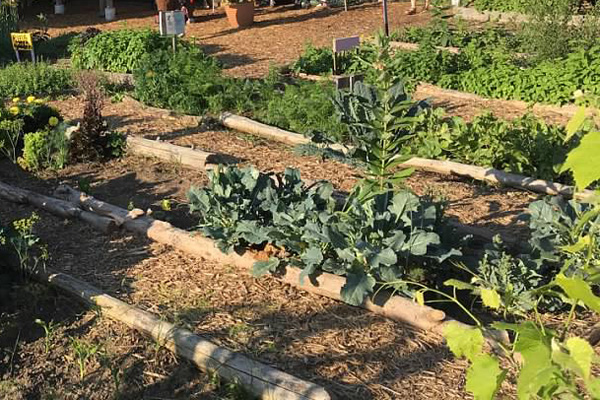The smart Trick of City Blooming That Nobody is Talking About
The smart Trick of City Blooming That Nobody is Talking About
Blog Article
City Blooming for Beginners
Table of ContentsOur City Blooming PDFsExcitement About City BloomingThe Main Principles Of City Blooming Facts About City Blooming RevealedThe Basic Principles Of City Blooming
Fascinated in growing food to buy in the City of Chicago? Believing about beginning a neighborhood yard? Modifications to the Chicago Zoning Ordinance enable agricultural usages like community yards and urban ranches in many components of the city. Below is a listing of regularly asked concerns concerning the rules and laws that farmers need to take into consideration when preparing a city agriculture task.
The zoning change does not modify any other codes taking care of composting, building licenses, buying or leasing City owned property, business licenses or environmental contamination. There are existing codes that regulate these problems and they remain in full effect and may be appropriate to your job. Neighborhood gardens are generally possessed or taken care of by public entities, civic companies or community-based organizations and kept by volunteers.
Urban farms grow food that is intended to be sold, either on a not-for-profit or for-profit basis. Due to their industrial purpose, metropolitan farms need an organization permit.
City Blooming Things To Know Before You Get This
The quantity of compost product can not exceed 25 cubic backyards at any offered time according to the requirements in 7-28-715 of the City's Municipal Code. Because the dirt at most new yard sites needs amending, compost, soil, timber chips, or other materials can be obtained to build or boost the growing area.

If a building license is required after that the hoophouse will be considered an accessory building. You can learn even more about the structure permit demands by calling the Division of Structures. The 25,000-square-foot size restriction is intended to stop a solitary community garden from dominating an offered block or diminishing the block's existing property or commercial character.
The limit does not put on yards located in Public Open Room (POS) areas. Can there be greater than one community yard that is 25,000 square feet on a single block? Yes. The size limitation puts on individual gardens, not to individual blocks. No. Fence is not called for, nevertheless, yards that have huge parking lot might be called for to install fence or various other landscape design functions.
The Definitive Guide for City Blooming
B1 & B2 districts call for that all business use tasks be carried out inside your home. R districts limit industrial task. The policies reflect the objective and intent of the Zoning Code. Is secure fencing needed for city farms? Yes. Fencings may be needed, in addition to landscape design and screening, for sure car park locations and outdoor work or storage locations depending on area and the certain activity taking place.
Urban ranches require structure permits and zoning authorizations prior to building (home and garden). Other kinds of city evaluation may be needed depending on specific structures, tasks, size, landscaping, licensing, public health and stormwater administration issues.
The Department of Service Matters and Customer Protection can help figure out the details type of service license that's needed. Off road vehicle parking is needed for a lot of commercial projects in Chicago. The called for number of parking spaces is based on the number of workers working on site and not the square footage of the expanding room.
Everything about City Blooming

A city farm can market compost product generated on site, nonetheless, the operation should conform with the guidelines in 7-28-715 of the Chicago Municipal Code. Aquaponic systems are enabled indoors on metropolitan farms in several zoning areas.
As much as five hives or swarms of honey may be maintained as an accessory usage. Beekeepers must register with the Illinois Division of Agriculture. To find out more regarding the proposed zoning amendment you may contact the Division of Housing and Economic Growth, Bureau of Planning and Zoning at 312.744.8563.
, which takes location in rural locations at the side of residential areas.
Unknown Facts About City Blooming
It can involve an activity of organic cultivators, "foodies" and "locavores", that seek to develop social media networks founded on a shared ethos of nature and neighborhood holism. These networks can develop check over here by method of official institutional support, coming to be integrated right into neighborhood town preparation as a "shift community" movement for lasting metropolitan growth.
In either case, the much more straight accessibility to fresh veggie, fruit, and meat products that may be become aware through metropolitan agriculture can enhance food safety and security and food safety and security while lowering food miles, resulting in reduced greenhouse gas exhausts, thereby contributing to environment modification reduction. Several of the first evidence of urban agriculture comes from Mesopotamia.
Report this page